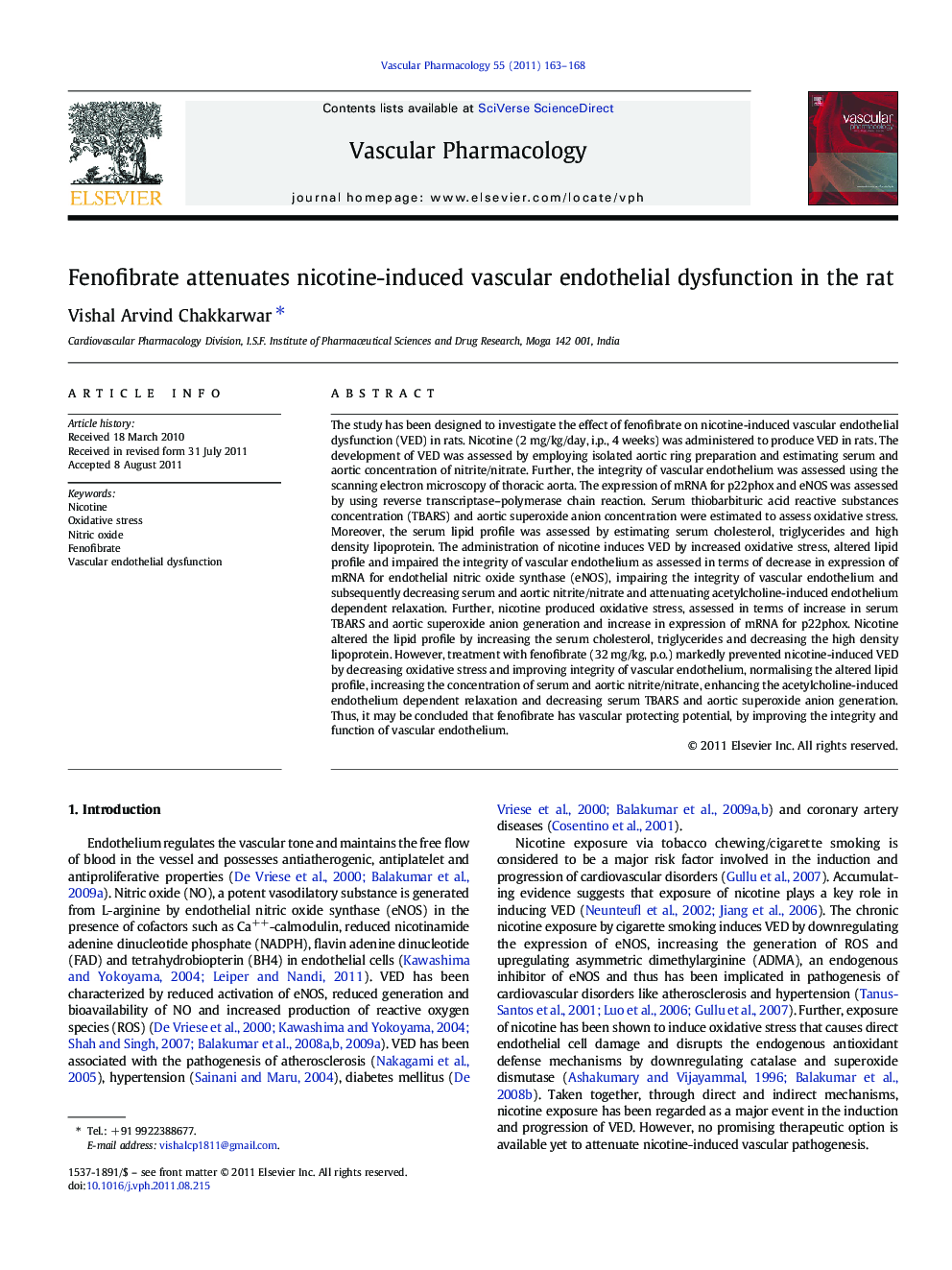| Article ID | Journal | Published Year | Pages | File Type |
|---|---|---|---|---|
| 5847609 | Vascular Pharmacology | 2011 | 6 Pages |
The study has been designed to investigate the effect of fenofibrate on nicotine-induced vascular endothelial dysfunction (VED) in rats. Nicotine (2Â mg/kg/day, i.p., 4Â weeks) was administered to produce VED in rats. The development of VED was assessed by employing isolated aortic ring preparation and estimating serum and aortic concentration of nitrite/nitrate. Further, the integrity of vascular endothelium was assessed using the scanning electron microscopy of thoracic aorta. The expression of mRNA for p22phox and eNOS was assessed by using reverse transcriptase-polymerase chain reaction. Serum thiobarbituric acid reactive substances concentration (TBARS) and aortic superoxide anion concentration were estimated to assess oxidative stress. Moreover, the serum lipid profile was assessed by estimating serum cholesterol, triglycerides and high density lipoprotein. The administration of nicotine induces VED by increased oxidative stress, altered lipid profile and impaired the integrity of vascular endothelium as assessed in terms of decrease in expression of mRNA for endothelial nitric oxide synthase (eNOS), impairing the integrity of vascular endothelium and subsequently decreasing serum and aortic nitrite/nitrate and attenuating acetylcholine-induced endothelium dependent relaxation. Further, nicotine produced oxidative stress, assessed in terms of increase in serum TBARS and aortic superoxide anion generation and increase in expression of mRNA for p22phox. Nicotine altered the lipid profile by increasing the serum cholesterol, triglycerides and decreasing the high density lipoprotein. However, treatment with fenofibrate (32Â mg/kg, p.o.) markedly prevented nicotine-induced VED by decreasing oxidative stress and improving integrity of vascular endothelium, normalising the altered lipid profile, increasing the concentration of serum and aortic nitrite/nitrate, enhancing the acetylcholine-induced endothelium dependent relaxation and decreasing serum TBARS and aortic superoxide anion generation. Thus, it may be concluded that fenofibrate has vascular protecting potential, by improving the integrity and function of vascular endothelium.
Graphical abstractDownload high-res image (247KB)Download full-size image
